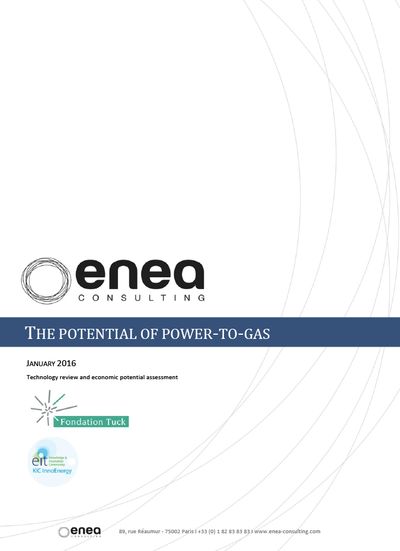The potential of power-to-gas

Blunomy (Enea Consulting) has carried out a study on power-to-gas, covering both technical and economic aspects. The objective of this study was to identify the use cases in which power-to-gas presents the most interest, and to explain the technical and economic conditions of its potential success. The study was funded by the Tuck Foundation as part of The Future of Energy program and co-funded by KIC InnoEnergy.
The increase in power generation from intermittent renewable energy is increasing European interest in power-to-gas
The production of electricity from intermittent, renewable sources (wind and solar) is developing massively in Europe. This increasing capacity leads to periods of particularly low electricity prices and represents an opportunity to develop flexible electro-intensive processes, in particular power-to-gas (hydrogen and methane synthesis).
In recent years, power-to-gas applications have gained growing interest in Europe, particularly in Germany. About 50 pilot and demonstration projects have been launched worldwide since 2004, most of them announced in the last 3 years, with a particular interest in the grid injection application.
A study based on sensitivity analyses to evaluate the conditions of profitability
The study evaluates the economic potential of power-to-gas and other power-to-X applications based on a techno-economic modelling of six case studies focusing on energy markets (grid injection, green mobility, heat production). For each case study, the levelised cost of the product is compared to the market prices of products from competing solutions. This comparison is carried out over three time horizons (2015, 2030 and 2050) using different sets of electricity price and technology cost assumptions to identify the conditions under which the case studies will be economically viable.
Green hydrogen mobility represents the most promising market for power-to-gas
Through the different case studies and scenarios analysed, the study indicates that power-to-gas technologies have the highest economic potential when targeting the hydrogen green mobility market. Thus, the future of power-to-gas remains highly dependent on the policy measures and financial incentives that will be put in place in the broader framework of decarbonisation of the transport sector.